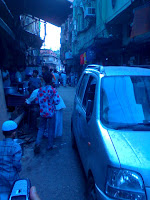
Who arcs in heat, but tries to remain firm,
Lends light bearing the hot vapor.
A beautiful vista with god’s finest milieu,
Breezy, cool, soothing embracing everywhere,
Selfless to all, patience intertwined.
She holds and speaks to you,
And you feel someone like never before.
I am blessed and surely am,
For envy of others tells me again that.
No equations for answers, No give and take,
No more certain values just because the world likes to fake.
Because truth and happiness are internal,
Need not plan life to achieve bliss .
World is a fight, I tell her,
But life is not a battle, she says,
Karma makes one who he/she is,
Values between us sometimes hardly meet.
I see I learn things everyday,
I find myself daily in the introspection that envelopes,
From the ocean that is mélange of the gods best one can offer,
I swim deeper each day to cut illusion all over.
No walls for far and wide,
She is a philosopher’s stone, a place I love to hide,
Child within, so wet,
Excess water will make her drain.
Life is a web ,you fall and learn,
Staying firm is the rule of the game.
There is a long path I need to tread,
Roadblocks I need to pass.
But cannot do all this without my critic, best friend
My source of strength, a candle lighting my way,
Sky is the limit, I am sure,
I need to be with her, that’s my life’s cure.












